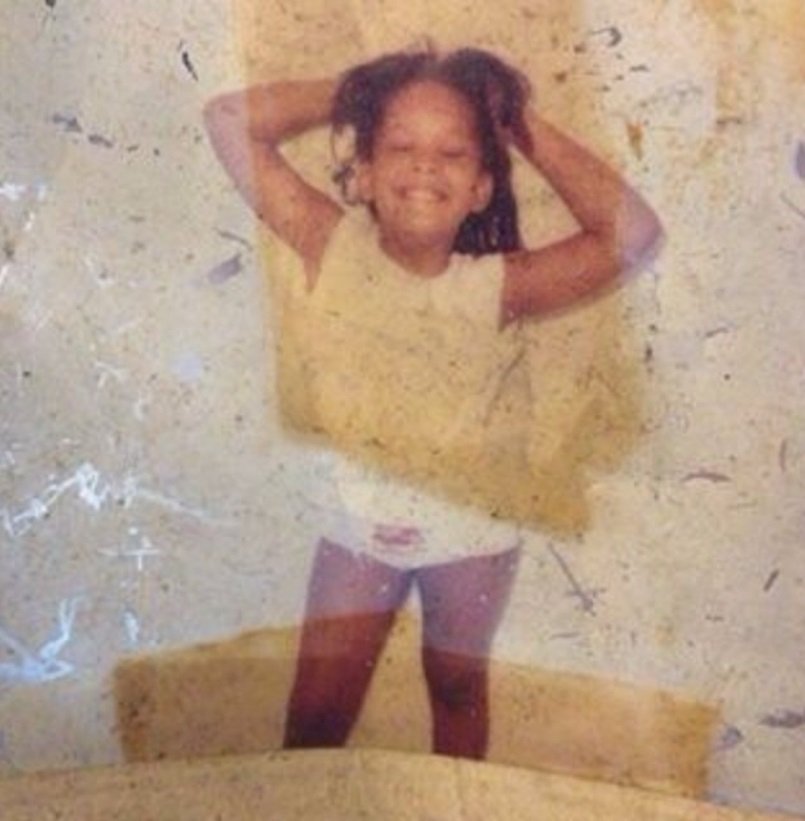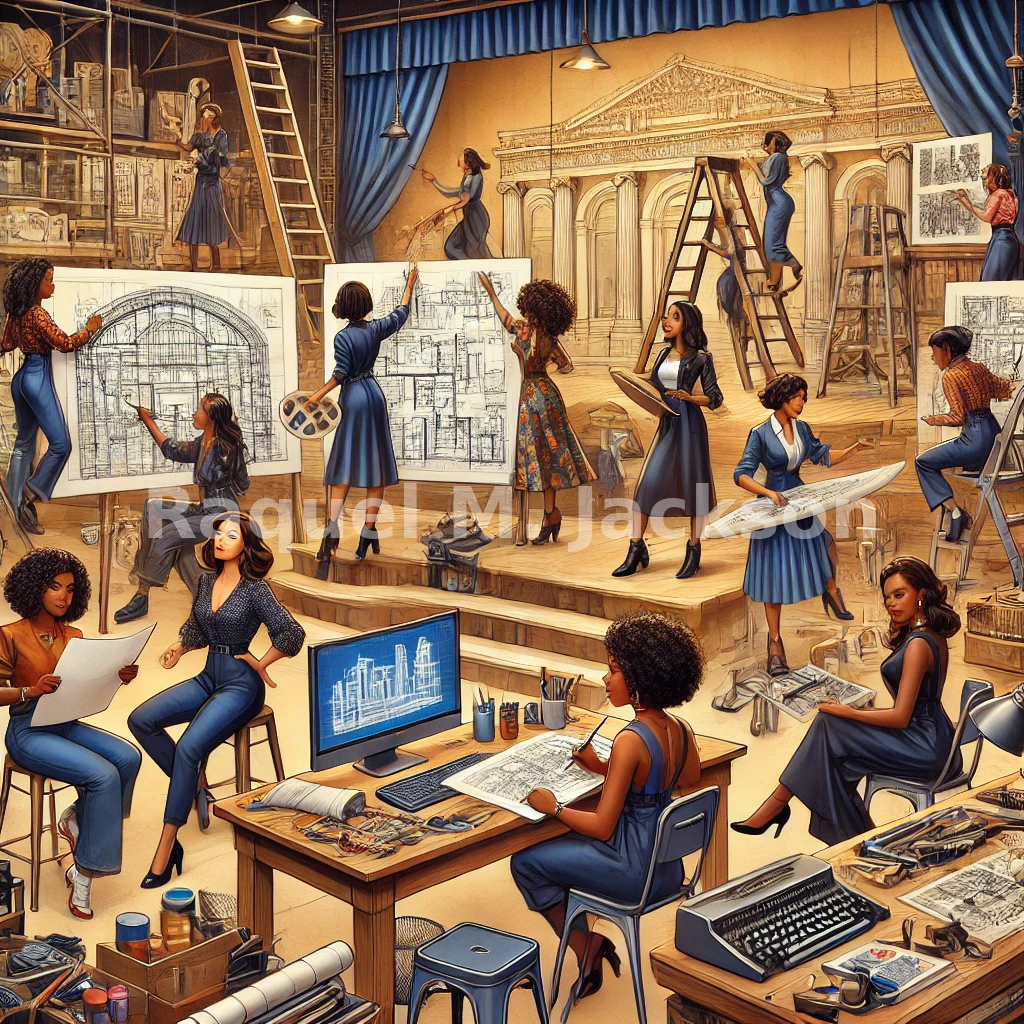Breaking into Set Design and Scenic Design: A Guide for Black Women
By Raquel M. Jackson
Dedication
To every Black woman dreaming of crafting spaces that inspire, transform, and tell stories—this book is for you. Let my journey be a beacon as you carve your own path in set design and scenic design.
Introduction
Hello! My name is Raquel M. Jackson, and I am a scenic designer with over 15 years of experience. I’ve had the privilege of designing for theater, television, and film, and I’ve walked a unique journey as a Black woman navigating this competitive industry. I’m also a wife, a mother of four amazing adult children from a previous relationship, a stepmother to one wonderful daughter, and a grandmother to four beautiful grandchildren. My husband, Thomas W. Jones II, has been a constant source of inspiration and support as I’ve built my career.
This eBook is not just a guide—it’s a love letter to aspiring Black female designers who dream of breaking into set design and scenic design. I want to share the lessons I’ve learned, the obstacles I’ve overcome, and the strategies that have helped me thrive in an industry where diversity is still a work in progress. Let’s get started.
Chapter 1: Your Story Is Your Power
Your story matters. As Black women, our experiences are rich with culture, resilience, and creativity. These elements make our designs unique and impactful. When I started, I didn’t have a traditional path. I attended the Art Institute of Philadelphia for Interior Design but had to leave due to life circumstances. Instead of giving up, I immersed myself in hands-on learning, self-teaching, and mentorship. My journey wasn’t linear, but it made me who I am today.
Action Step:
Write down your story. Reflect on what inspires you and how your background influences your vision. This is your brand—own it.
Chapter 2: Building Your Skills
Whether you’re interested in set design or scenic design, technical and creative skills are essential. Here are some key areas to focus on:
Set and Scenic Design:
Drafting and Rendering: Learn to create clear and detailed plans. Tools like SketchUp and AutoCAD are invaluable.
Storytelling: Every set tells a story. Practice designing spaces that reflect narratives.
Collaboration: Work with directors, producers, and technical crews to bring your vision to life.
Expanding Your Creative Palette:
Experiment with different design styles, from minimalistic to bold and eclectic.
Incorporate cultural elements into your designs to reflect unique narratives.
Stay updated with industry trends and innovations through design journals and blogs.
Action Step:
Take a free online course or tutorial to enhance your skills. Websites like Skillshare, LinkedIn Learning, and YouTube offer excellent resources.
Chapter 3: Networking and Mentorship
One of the most transformative parts of my journey has been mentorship. I’ve been fortunate to learn from amazing people, like Korey Washington, who taught me the business and helped refine my skills. Surround yourself with people who uplift and guide you.
Where to Network:
Theater and Design Conferences: Events like USITT, LORT gatherings, and NeoCon are great for meeting industry professionals.
Online Communities: Join Facebook groups, LinkedIn forums, or local meetups focused on design.
Cold Outreach: Don’t be afraid to email professionals you admire. Share your story and ask for advice.
Volunteer: Offer your skills to community theaters, student productions, or local design projects.
Mentorship Tips:
Be clear about what you’re looking for in a mentor.
Be open to constructive criticism and learn from their feedback.
Keep building the relationship—mentorship is an ongoing process.
Action Step:
Reach out to someone you admire in the field. A simple email or LinkedIn message can open doors.
Chapter 4: Navigating Challenges as a Black Woman
Being a Black woman in design means facing unique challenges, from lack of representation to assumptions about your expertise. Here’s how I’ve navigated these hurdles:
Confidence: Trust in your talent. You belong in every room you enter.
Advocacy: Speak up for your vision and ensure your voice is heard.
Community: Lean on other Black women for support and encouragement.
Overcoming Bias:
Show your value through exceptional work.
Find allies in your workplace or industry who champion your success.
Celebrate your wins and let your achievements speak for themselves.
Action Step:
Join or start a group for Black women in design. Collaboration and support can fuel your journey.
Chapter 5: Tools for Success
These are some of the tools and strategies I use to stay organized and deliver exceptional work:
Project Management:
Excel: I use Excel for budget tracking, an old-school but effective tool that helps me stay on top of finances.
Design Software:
SketchUp: Essential for creating 3D models.
SketchUp Plugins: Great for rendering detailed designs and final presentations.
Adobe Creative Suite: Useful for creating polished graphics and enhancing visual presentations.
Canva: Perfect for quick presentations and mood boards.
Blender: My son recently introduced me to Blender, a software for creating 3D objects. It offers powerful tools for modeling and can be an exciting addition to any designer’s toolkit.
Inspirational Boards:
Google and Pinterest: My go-to platforms for sourcing creative ideas and compiling visual inspiration.
Creative Ideation:
ChatGPT and OpenAI: I use these tools to help me read and break down scripts, brainstorm creative ideas, and refine concepts while sketching. They provide valuable insights and inspire new approaches to my designs.
Time Management:
Discipline Over Apps: I don’t rely on time management apps. Instead, I focus on the task at hand and work until it’s completed—or at least 90% finished, depending on the complexity and timeline.
Practical Tips:
Keep your software updated and learn new features regularly.
Create templates for repetitive tasks to save time.
Invest in good hardware, like a high-resolution monitor and a reliable laptop.
Action Step:
Create a simple online portfolio showcasing your best work. Platforms like Wix, Squarespace, or WordPress make it easy.
Chapter 6: Breaking into the Industry
Getting your first job can feel daunting, but persistence pays off. Here’s how to get started:
Freelance Projects: Offer your services for smaller productions or residential projects.
Apprenticeships and Assistant Roles: Learn on the job while building connections.
Marketing Yourself: Use social media, attend events, and send tailored emails to showcase your expertise.
Tailored Applications: Research the companies you’re applying to and customize your application to show how you align with their mission.
Networking: Always follow up with the people you meet and maintain those connections.
Action Step:
Identify three opportunities to showcase your work—whether it’s a local theater, a small business, or a community project.
Conclusion: Your Path Awaits
Breaking into set design and scenic design isn’t easy, but it’s worth it. As a Black woman, you bring a perspective that the industry needs. Trust your story, build your skills, and never stop pursuing your dreams.
Remember, the path may not always be straight, but it’s yours to walk. Celebrate every milestone, no matter how small, and know that you’re making a difference through your work.
I’m rooting for you—always.
About the Author
Raquel M. Jackson is a Black female set designer with over 15 years of experience in theater, film, and television. She is passionate about empowering women, especially Black women, to pursue their dreams in design. Raquel lives with her husband, Thomas W. Jones II, and their family, finding inspiration in her roles as a wife, mother, and grandmother.
Let’s Connect
If you’re ready to take the next step, visit www.equiposedesigns.com to book a consultation or learn more about my work.


